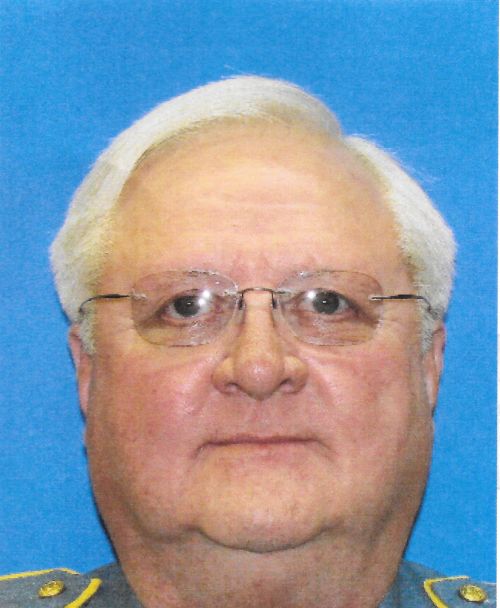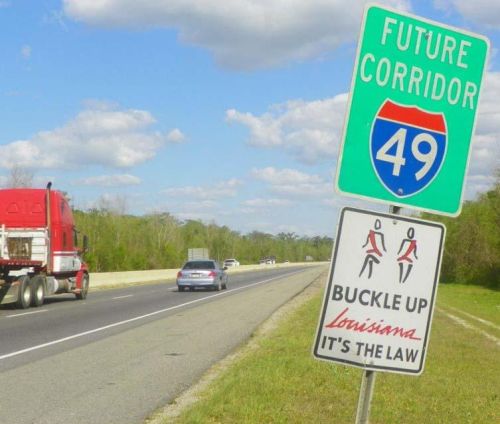
Turf war over snapper, surf
April 22, 2014
Long-time TPSO deputy dies over Easter weekend
April 22, 2014As improvements become necessary for Louisiana’s aging roadways, funding to maintain and build the state’s infrastructure becomes scarcer as projects begin to backlog.
Interstate 49 remains a major initiative to improve safety and traffic flow, as well as bring the state’s roadways up to federal standards. Based on known revenues, the culmination of I-49 South is estimated within 20 years.
The I-49 South initiative aims to transform 160 miles of U.S. Highway 90 and bring portions of roadway from Lafayette to New Orleans up to federally recognized interstate standards.
Mike Michot, former state senator from 2000 to 2012, now serves as director of the I-49 South coalition.
“I-49 South is a major piece towards completing our regional infrastructure network,” he said at a South Central Industrial Association Meeting. “Our region already possesses great ports, railways and airports. An interstate will only enhance our region’s marketability.”
The coalition reports the amount of accidents, injuries and deaths along Highway 90 exceed the need for a safer means of transportation for citizens and families along “America’s Energy Corridor.”
Michot pinpointed economic development and the transportation of products produced locally as another important reason to connect the pieces of I-49.
“We’re extracting oil and gas off the coast of south Louisiana and getting it to the rest of the country, so it’s absolutely critical,” he said. “It’s a national impact that is of importance to the rest of the country.”
Kevin Belanger, chief executive officer for South Central Planning and Development, agreed with Michot, and said I-49 would provide a better corridor to access the oil and gas industries in Houma, Lafayette and Port Fourchon.
“It can potentially open the door for other manufacturing facilities wanting to locate here, which typically want interstate access to new facilities,” he said.
Despite the demand expressed by Louisiana residents and economic growth, Michot said the state has accumulated a backlog of projects throughout the state, which makes funding for projects such as I-49 hard to come by.
“The traditional funding models don’t have any extra pots of money,” Michot said. “When you think of the pieces of I-49 South that we have yet to complete, $750 million to $1 billion is the estimate cost of one piece of the project.”
An update to the I-49 plan released last year by the Louisiana Department of Transportation and Development reveals $3.7 billion in savings toward project costs.
The study which focused on corridors from Raceland to the Westbank Expressway and from Wax Lake Outlet to Berwick re-evaluated converting U.S. Highway 90 to an interstate facility, and opts for improvements and efficiencies to the roadway.
The 36-mile section, which spans portions of Lafourche, St. Charles and Jefferson parishes, saw a reduction in improvement costs from $4.8 billion to $1.3 billion.
The 11-mile section in St. Mary Parish saw a reduction in costs from $460 million to $250 million.
But even with the reductions in cost, the state does not have the funding for construction expenses, and Michot advocated implementing toll roads to help fund the I-49 South project.
“When you think about it, a toll is the best way to fund infrastructure,” Michot said. “If you want to drive on that road, pay for it.”
Most of the current funding for road projects is generated from the state’s gas tax of 20 cents per gallon, which has not increased for 22 years.
Michot said the state had not implemented a toll road for almost 30 years until the La. Highway 1 toll bridge opened in 2009.
“The greatest return we have on our tax dollars is putting it into infrastructure,” he said. “Infrastructure affects a whole community.”
Belanger said tolls are a viable option but not as practical when it comes to implementation.
“Automated tolls cost money and bring glitches,” he said. “It’s not as user friendly.”
Michot credited DOTD Secretary Sherri LeBas for making I-49 South an infrastructure priority among the state’s growing list of road repairs.
An audit of Louisiana’s bridges by the Department of Transportation and Development classified 1,806 of the state’s 12,905 bridges as structurally deficient.
LeBas said the department budgeted approximately $180 million to address more than $2.7 billion worth of bridge maintenance and construction needs for deficient bridges.
“To make the best use of funds available, the DOTD uses an established process of bridge inspection and prioritization of projects that will address the bridges that are in most need and are on high traffic or truck routes,” LeBas said.
From 2012 to 2013, the number of structurally deficient bridges increased by 48 bridges from 1,758 to 1,806.
“If we don’t do something we are going to be left further and further behind from other states in this nation,” Michot said. “Funding infrastructure is the strongest thing we can do with taxpayer dollars.”
Belanger said I-49 from La. Highway 1 to Morgan City has “basically been completed,” and residents would not see many changes in the future except for signage.
“We have controlled access surrounding us right now,” he said. “We will see a bigger traffic load once it is all completed.”
Interstate 49 South is slated to extend from Lafayette to New Orleans, transforming 160 miles of U.S. Highway 90 into interstate-grade road. However, federal and state funding for the project is currently in short supply, according to the project’s coalition director.











